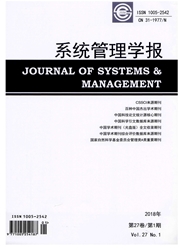

 中文摘要:
中文摘要:
在对世界可持续发展能力系统学解析的基础上,从全球视角介绍了世界可持续发展能力的"资产-负债"分析法。具体包括:可持续发展能力支持系统、资产负债矩阵、资产负债算法和资产负债类型等。应用资产负债分析对世界192个国家和地区的可持续发展能力进行度量,并重点对比了发达国家、新兴经济体国家、最不发达国家在不同支持系统的资产负债水平。资产负债分析为世界各国可持续发展能力的精确评判奠定了坚实的理论基础,为检验各国可持续发展战略的执行情况提供了定量依据,也为各国进一步设计和规划可持续发展战略的优先顺序提供了深度参考。
 英文摘要:
英文摘要:
Based on the study of world sustainable development according to systematic theory, a balance sheet which measures different countries' levels of sustainability(called the sustainability Assets-Liabilities table) was developed. The research includes sustainable development support systems, the assets-liabilities matrix, the assets-liabilities algorithm, and the assets-liabilities types. Then, the sustainability Assets-Liabilities method is applied to quantitatively calculate the sustainable development capability of 192 countries, particularly, Assets-Liabilities levels of three different types of countries, namely developed countries, emerging economies countries, and the most undeveloped countries, are compared at different support systems.Their strengths and weaknesses are plotted on a radar map. The preparation of balance sheet provides a solid theoretical foundation for accurate judgment on the development capacity of a particular country or region. This Assets-Liabilities analysis provides quantitative metrics for measuring the actual progress of each country's sustainable development strategy, and also offers the references for each country to further design and plan the priority order of sustainable development goals.
 同期刊论文项目
同期刊论文项目
 同项目期刊论文
同项目期刊论文
 SuperedgeRank algorithm and its application in identifying opinion leader of online public opinion s
SuperedgeRank algorithm and its application in identifying opinion leader of online public opinion s Superedge coupling algorithm and its application in coupling mechanism analysis of online public opi
Superedge coupling algorithm and its application in coupling mechanism analysis of online public opi 期刊信息
期刊信息
